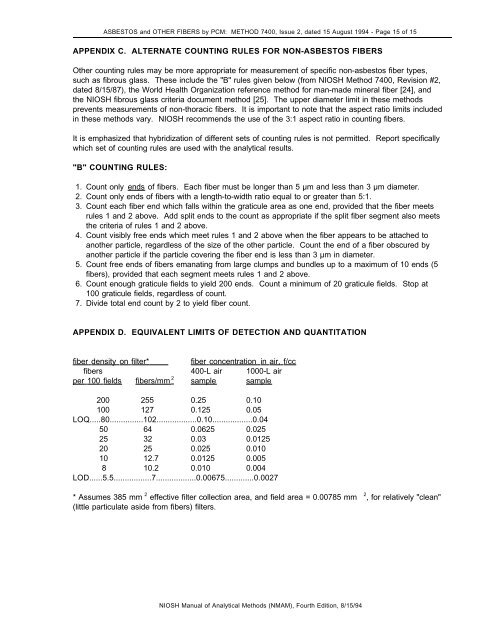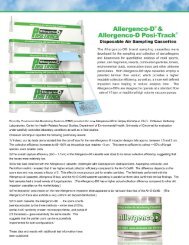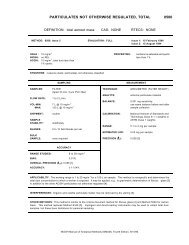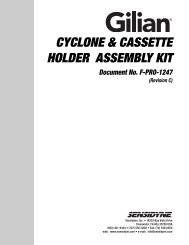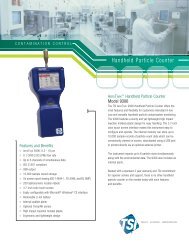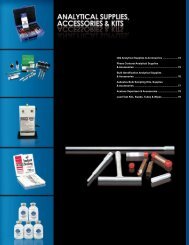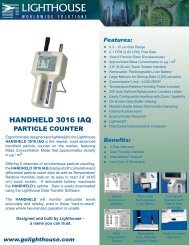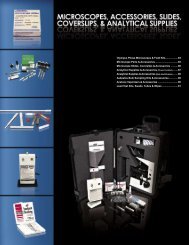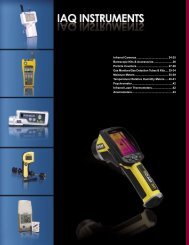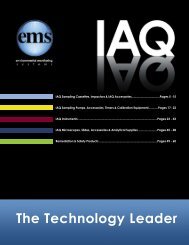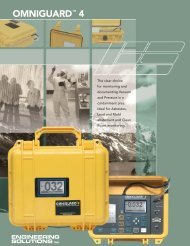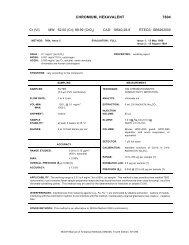NIOSH Method 7400 : Asbestos and Other Fibers by PCM
NIOSH Method 7400 : Asbestos and Other Fibers by PCM
NIOSH Method 7400 : Asbestos and Other Fibers by PCM
You also want an ePaper? Increase the reach of your titles
YUMPU automatically turns print PDFs into web optimized ePapers that Google loves.
ASBESTOS <strong>and</strong> OTHER FIBERS <strong>by</strong> <strong>PCM</strong>: METHOD <strong>7400</strong>, Issue 2, dated 15 August 1994 - Page 15 of 15APPENDIX C. ALTERNATE COUNTING RULES FOR NON-ASBESTOS FIBERS<strong>Other</strong> counting rules may be more appropriate for measurement of specific non-asbestos fiber types,such as fibrous glass. These include the "B" rules given below (from <strong>NIOSH</strong> <strong>Method</strong> <strong>7400</strong>, Revision #2,dated 8/15/87), the World Health Organization reference method for man-made mineral fiber [24], <strong>and</strong>the <strong>NIOSH</strong> fibrous glass criteria document method [25]. The upper diameter limit in these methodsprevents measurements of non-thoracic fibers. It is important to note that the aspect ratio limits includedin these methods vary. <strong>NIOSH</strong> recommends the use of the 3:1 aspect ratio in counting fibers.It is emphasized that hybridization of different sets of counting rules is not permitted. Report specificallywhich set of counting rules are used with the analytical results."B" COUNTING RULES:1. Count only ends of fibers. Each fiber must be longer than 5 µm <strong>and</strong> less than 3 µm diameter.2. Count only ends of fibers with a length-to-width ratio equal to or greater than 5:1.3. Count each fiber end which falls within the graticule area as one end, provided that the fiber meetsrules 1 <strong>and</strong> 2 above. Add split ends to the count as appropriate if the split fiber segment also meetsthe criteria of rules 1 <strong>and</strong> 2 above.4. Count visibly free ends which meet rules 1 <strong>and</strong> 2 above when the fiber appears to be attached toanother particle, regardless of the size of the other particle. Count the end of a fiber obscured <strong>by</strong>another particle if the particle covering the fiber end is less than 3 µm in diameter.5. Count free ends of fibers emanating from large clumps <strong>and</strong> bundles up to a maximum of 10 ends (5fibers), provided that each segment meets rules 1 <strong>and</strong> 2 above.6. Count enough graticule fields to yield 200 ends. Count a minimum of 20 graticule fields. Stop at100 graticule fields, regardless of count.7. Divide total end count <strong>by</strong> 2 to yield fiber count.APPENDIX D. EQUIVALENT LIMITS OF DETECTION AND QUANTITATIONfiber density on filter* fiber concentration in air, f/ccfibers 400-L air 1000-L airper 100 fields fibers/mm 2 sample sample200 255 0.25 0.10100 127 0.125 0.05LOQ.....80...............102..................0.10..................0.0450 64 0.0625 0.02525 32 0.03 0.012520 25 0.025 0.01010 12.7 0.0125 0.0058 10.2 0.010 0.004LOD......5.5.................7..................0.00675.............0.0027* Assumes 385 mm 2 effective filter collection area, <strong>and</strong> field area = 0.00785 mm 2 , for relatively "clean"(little particulate aside from fibers) filters.<strong>NIOSH</strong> Manual of Analytical <strong>Method</strong>s (NMAM), Fourth Edition, 8/15/94


